|
Introduction to Probability |
|
|
| |
|
Refer to the following scenario to answer the next two questions: In a contest, seven people have the chance to win a car. Out of seven keys, one will start the car. The players take turns, each selecting a key and trying it in the car. When a player chooses the correct key, he or she wins the car and the contest is over. |
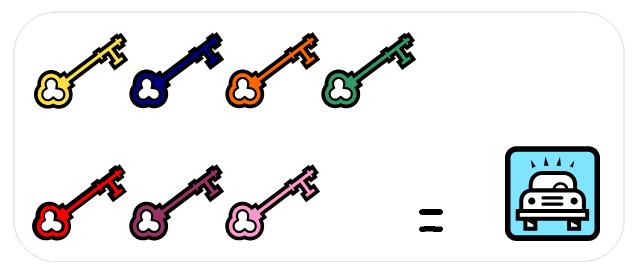 |
|
| |
| |
|
| |
|
| |
|
Read the following rules for playing the card game, Old Maid, and then complete the next three statements about the game and probability. |
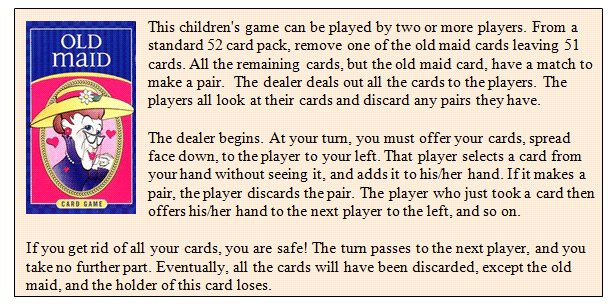 |
|
| |
| 3)
The list of 51 playing cards is the __________. |
|
|
|
| |
|
| 4)
The likelihood that one player will be dealt the old maid card is the __________. |
|
|
|
| |
|
| 5)
A single die is rolled. Which of the following probabilities is NOT true? |
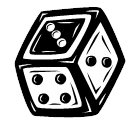 |
|
|
| |
|
| 6)
The table below shows the number of fish caught each day of the week by Jimmy’s father. Jimmy knew that his father had caught some fish that week, but not which days he had been successful. If Jimmy’s father asks him to guess which day of the week he had caught some fish, what is the probably that Jimmy will choose a correct day? |
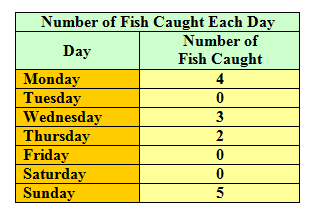 |
|
|
| |
|
| 7)
If a marble is picked from the bag described below without looking, the selected marble is most likely to be what color? |
 |
|
|
| |
|
| 8)
Jade and Matilda are playing double-six dominoes. There are 28 playing tiles. Seven of the tiles are called doubles. All of the tiles are placed face down and shuffled. Jade picks six (6) tiles, one of which is a double. It is then Matilda’s turn to pick her tiles. What is the probability that Matilda will pick a double on her first pick? |
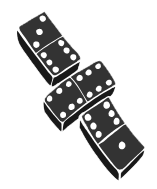 |
|
|
| |
|
|
Independent and Dependent Events |
|
|
| |
| |
| |
|
| |
|
| |
|
| |
|
|
Refer to the following scenario to find the probabilities for the next four problems: In a gumball machine there are a total of 60 gumballs. There are 9 yellow, 13 red, 6 blue, 5 green, 12 orange, and 15 white gumballs. Once a gumball is taken out of the gumball machine, it is NOT REPLACED. Express the answer as a fraction in simplified form or as a percent rounded to the nearest whole percent. |
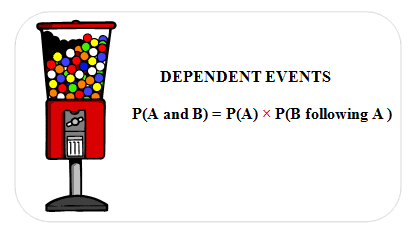 |
|
| |
| |
|
| |
|
| |
|
| |
|
| 17)
What type of event occurs when the outcome of one event does not affect the other event? |
|
|
|
| |
|
| 18)
What type of event occurs when the outcome of one event affects the outcome of another event? |
|
|
|
| |
|
| 19)
What kind of probability event occurs when two blue M&M’s are chosen from a bag, and the first one is not put back into the bag before the second one is chosen? |
|
|
|
| |
|
| 20)
Rolling three dice is an example of what kind of probability event? |
|
|
|
| |
|
|
Inclusive and Mutually Exclusive Events |
|
|
| |
|
If two events cannot happen at the same time, they are MUTUALLY EXCLUSIVE. To find the probability of two mutually exclusive events, ADD the probabilities of each event. |
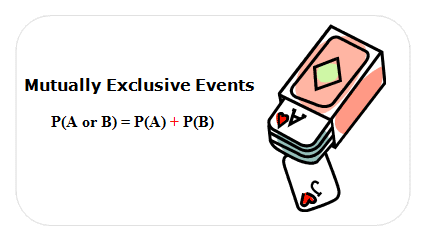 |
|
| |
|
Consider a standard deck of 52 playing cards to solve the next four problems. Express the answer as a fraction in simplified form or as a percent rounded to the nearest whole percent. |
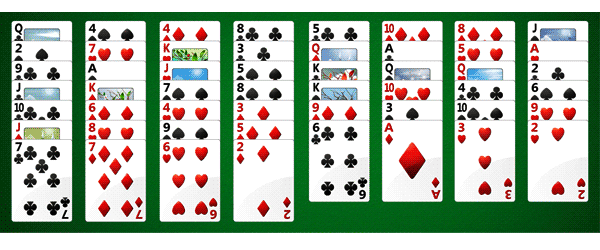 |
|
| |
|
Ace through King = A(1), 2, 3, 4, 5, 6, 7, 8, 9, 10, Jack (11), Queen (12), King (13) = 13 cards in one suit. |
|
|
| |
|
There are 4 suits in a standard deck of cards: Hearts, Diamonds, Clubs, and Spades. |
|
|
| |
|
There are 2 Black Suits: CLUBS and SPADES. There are 2 Red Suits: HEARTS and DIAMONDS. |
|
|
| |
| |
|
| |
|
| |
|
| |
|
|
INCLUSIVE EVENTS are events that can occur at the same time. To find the probability of two inclusive events, ADD the probabilities of each event, then SUBTRACT the overlap of the outcome of the two events. |
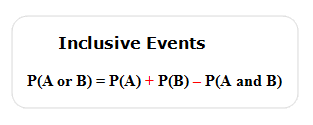 |
|
| |
| |
|
| 26)
In a mutually inclusive problem, the overlap of the two outcomes must be subtracted. What cards would be found in both of the events; that is, what cards would be found in both the P(Red) and the P(Ace)? |
|
|
|
| |
|
|
For the next three problems, refer to a standard deck of playing cards to find the probability. Express the answer as a fraction in simplified form or as a percent rounded to the nearest whole percent. |
|
|
| |
| |
|
| |
|
| |
|
|
Determine whether each event about the spinner shown below is mutually exclusive or inclusive in the next two probability problems. |
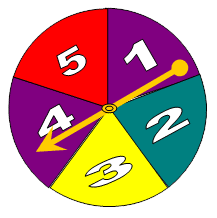 |
|
| |
| |
|
| |
|
| |
| Shown below are the first 80 digits of “Pi” right of the decimal point. Set A is the first 20 digits, Set B is the next 20 digits, Set C is the next 20 digits, and Set D is the final 20 digits. |
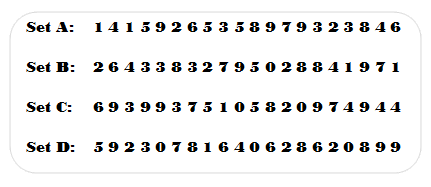 |
|
| |
| The chart below shows the 80 digits organized by sets and by the occurrence of each digit in each of the sets. The chart also shows the total occurrence of each digit. |
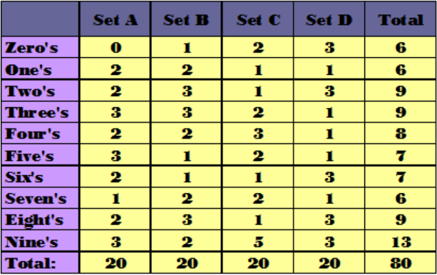 |
|
| |
| 32) A digit is selected randomly from the first 80 digits of “Pi” (after the decimal point). What is the probability it is a three (3) or a seven (7)? |
|
|
|
| |
|
| 33) A digit is selected randomly from the first 80 digits of “Pi” (after the decimal point). What is the probability it is in Set B OR is a five (5)? (Hint: Consider there is an overlap between the two events.) |
|
|
|
| |
|
| 34) If you were directed by your school to complete Offline Activities for this course, please enter the information on the Log Entry form. |
|
| No offline activities found |
0 Hour(s) & 0 Minute(s)
|
|
|
Attachments |
|